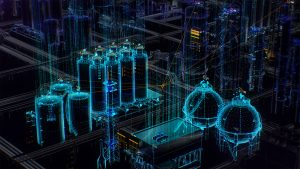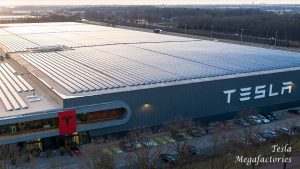Digital Twins are changing the way businesses handle complicated problems by creating virtual reproductions of tangible assets, systems, and processes. This powerful technology, which integrates IoT, AI, and data analytics, allows businesses to monitor, mimic, and optimize real-world processes in a virtual setting. By 2025, the digital twin market is predicted to expand dramatically, impacting
Digital Twins are changing the way businesses handle complicated problems by creating virtual reproductions of tangible assets, systems, and processes. This powerful technology, which integrates IoT, AI, and data analytics, allows businesses to monitor, mimic, and optimize real-world processes in a virtual setting. By 2025, the digital twin market is predicted to expand dramatically, impacting industries such as manufacturing, healthcare, real estate, and transportation. Let’s take a look at the future of digital twins, including the benefits, real-world instances, and potential case studies that demonstrate the revolutionary power of this technology.
What is a Digital Twin?

Image by Yandex.com
A digital twin is a digital replica of a physical asset, such as a machine, building, or even a human body. Using data from sensors, the digital twin is constantly updated to reflect real-time conditions, providing insights that can be used for predictive maintenance, performance optimization, and risk reduction. Digital twins are becoming more integral as the Internet of Things (IoT) connects more devices, providing data for enhanced decision-making.
The Advantages of Digital Twins for Range of Industry Real-Time Monitoring and Control
By continuously updating the condition of physical assets, digital twins provide real-time monitoring, allowing for the early identification of possible problems. This real-time monitoring is essential for sectors like manufacturing and healthcare to avoid unplanned outages or malfunctions.
Improved Predictive Maintenance
Digital twins can anticipate equipment faults before they occur by using sensor data. Predictive maintenance is particularly useful in sectors like utilities and energy since it lowers repair costs and downtime.
Improved Operational Efficiency
Digital twins help businesses understand the intricacies of their operations, allowing them to simulate different scenarios to optimize processes. This can increase productivity, lower costs, and ensure the efficient use of resources.
Reduction of Risk and Enhancement of Safety
Digital twins offer a secure online environment for risk mitigation, outcome prediction, and change testing. Digital twins, for instance, might mimic safety procedures in the construction industry to avert mishaps before they occur.
Sustainability and Decreased Environmental Effects
Digital twins support sustainability initiatives by streamlining procedures and cutting down on resource waste. For instance, it is possible to improve manufacturing’s energy use, which lowers emissions and helps comply with environmental standards.
Uses of Digital Twins in Industry
1. Production
Use Case: Process optimization and predictive maintenance
Manufacturers can use digital twins to build virtual representations of their facilities and equipment, facilitating predictive maintenance and real-time monitoring. Manufacturers can optimize production flows, lower equipment failure rates, and guarantee a stable supply chain by modeling factory operations. For example, General Electric saves millions of dollars on repairs by using digital twins in its aircraft engines to track performance and anticipate maintenance requirements.
Siemens’ Amberg Factory, for instance
Siemens achieves high levels of automation at its Amberg production by utilizing digital twin technology. By simulating the production floor, the digital twin enables real-time modifications to improve productivity. Siemens has been able to attain production rates of almost flawless quality as a result.
2. Healthcare
Use Case: Personalized Patient Treatment
Digital twins in healthcare provide a groundbreaking approach to personalized treatment. By creating a virtual model of a patient’s physiology, healthcare providers can predict the outcomes of treatments, monitor health metrics, and tailor medications. This personalized approach enhances patient outcomes and minimizes the risks associated with general treatment methods.
Example: Philips’ Digital Twin of the Human Heart
Philips developed a digital twin of the human heart to assist in testing and optimizing treatments for cardiovascular diseases. This model enables doctors to simulate surgical procedures and drug responses, improving precision in patient care.
3. Construction and Real Estate

Image by Yandex.com
Use Case: Construction Management and Infrastructure Planning
By letting architects and urban designers create virtual models of structures and even cities, digital twins are redefining urban design. Digital twins enable to maintain buildings, forecast repairs, and even maximize energy use for sustainability by means of sensor-based data collecting.
For instance, the Virtual City Project underway in Singapore
Virtual Singapore, a digital clone of the whole city developed by Singapore, aims to replicate traffic patterns, track building performance, and guide further developments. By tackling transportation congestion, increasing building safety, and endorsing sustainable urban planning, this project seeks to better urban living.
4. Energy and Utilities
Use Case: Asset Management and Risk Reduction
In the energy sector, digital twins are used to monitor the performance of power grids, wind turbines, and other infrastructure. Real-time data enables proactive maintenance, helping prevent outages and reduce repair costs.
Example: National Grid’s Digital Twin for Renewable Energy
The National Grid uses digital twins to simulate renewable energy sources, such as wind farms. By analyzing real-time data from wind turbines, the digital twin enables predictive maintenance, maximizing energy output and reducing downtime.
5. Transportation and Logistics
Use Case: Fleet Management and Route Optimization
Digital twins help in logistics by simulating fleet operations, predicting vehicle maintenance, and optimizing routes. This results in reduced fuel costs, efficient delivery times, and improved safety standards.
Example: DHL’s Smart Warehouse Operations
DHL uses digital twins to streamline warehouse operations, simulate package flow, and optimize space usage. By monitoring conditions in real time, DHL minimizes operational delays and enhances customer satisfaction.
Emerging Trends in Digital Twins
AI-Driven Digital Twins
Digital twins will get more clever as artificial intelligence technologies develop, therefore facilitating sophisticated automation and decision-making. By examining trends inside digital twins, machine learning techniques can generate reliable predictions—like those for smart city energy use optimization or industrial machine failure prediction.
Integration with 5G Technology
The rise of 5G will facilitate faster data transfer, making real-time updates for digital twins more precise. In sectors like healthcare and automotive, 5G will enhance the responsiveness of digital twins, enabling quicker simulations and immediate feedback.
Expansion into Smart Cities
Smart cities are adopting digital twins for urban planning, energy distribution, and traffic management. By creating digital twins of entire cities, urban planners can monitor infrastructure, simulate population growth impacts, and enhance public services. Cities like Shanghai and Singapore are already seeing the benefits of this integration.
Edge Computing and IoT
Edge computing allows data processing closer to where it’s generated, reducing latency and improving the efficiency of digital twins. Paired with IoT, edge computing ensures that the digital twin receives instant data updates from sensors, resulting in better decision-making for industries like retail and healthcare.
Sustainable Operations
As industries commit to reducing their carbon footprint, digital twins offer a way to achieve these goals. By using simulations to optimize processes, digital twins reduce energy consumption, minimize waste, and help companies meet sustainability targets.
Successful Implementation of Digital Twins

Image by Yandex.com
Tesla’s Virtual Factory Model
Tesla uses digital twins in its production lines to simulate the entire manufacturing process, from assembly to quality control. By collecting data from each stage, Tesla’s digital twin detects inefficiencies, allowing engineers to make adjustments in real time. This approach has helped Tesla reduce production costs and enhance product quality.
BP’s Offshore Oil Platform Monitoring
BP leverages digital twins to monitor offshore oil platforms. The twin replicates the platform’s environment, including machinery and external conditions, enabling engineers to predict failures and schedule maintenance without the need for physical inspections. This results in safer operations, less downtime, and lower maintenance costs.
Kaeser Compressors’ Smart Equipment Management
Kaeser Compressors, a leading industrial air compressor manufacturer, uses digital twins to monitor equipment health and predict maintenance needs. The digital twin analyzes data from sensors to predict when compressors need servicing, reducing operational costs and improving service reliability.
The Future Potential of Digital Twins
The future of digital twins appears promising, with potential expansions into sectors such as education, agriculture, and retail. As IoT and AI technologies continue to evolve, digital twins will become more sophisticated, enabling precise simulations and highly personalized insights. In the education sector, for instance, digital twins can simulate lab experiments, providing students with virtual hands-on experience. In agriculture, digital twins can help farmers monitor crop health, optimize yields, and improve soil management.
Digital twins are also expected to play a vital role in the space industry. NASA, for example, uses digital twins to monitor and manage spacecraft performance. As space exploration grows, digital twins will aid in planning, mission control, and long-term exploration strategies.
Conclusion
A transforming technology with great promise across several sectors are digital twins. Digital twins are improving efficiency, lowering costs, and opening the path for creative, data-driven ideas in manufacturing and healthcare as well as in urban planning and logistics. The reach and powers of digital twins will further widen as businesses embrace IoT and artificial intelligence, therefore moving us closer to a more linked, efficient, and sustainable future. Digital twins are not only a trend but also a calculated step toward a better, more efficient operational model for companies trying to remain competitive.
Digital twins hold the key to a future in which virtual simulations and real-time data-driven insights will transform the way businesses run, therefore enabling them to make faster, better, safer decisions. Adopting digital twins could be the advance move towards a dynamic and strong future regardless of your field of work—manufacturing, healthcare, or city planning.















